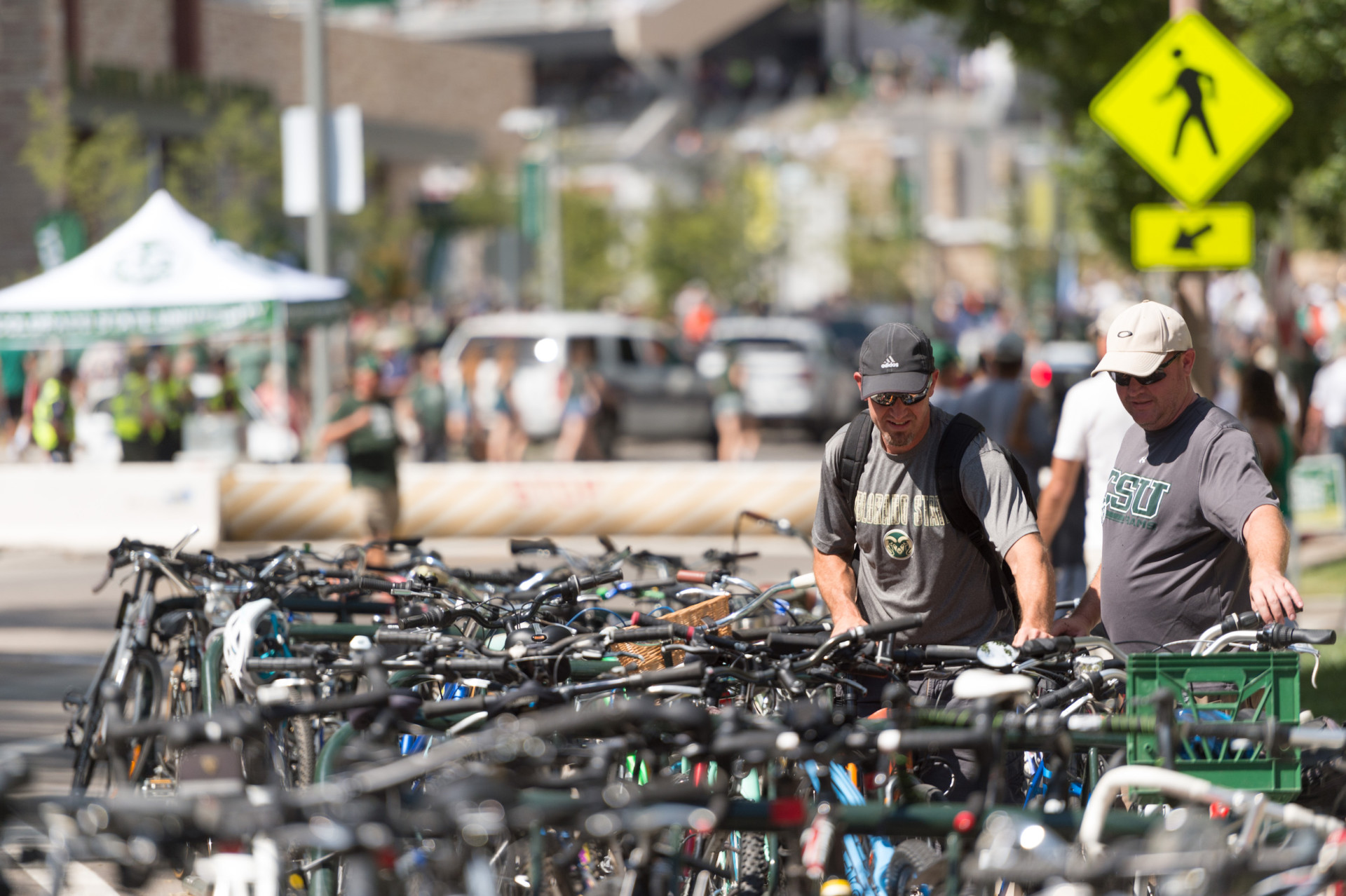
The beautiful setting of Colorado State University and Fort Collins is legendary for inspiring bike rides, and many students depend on bicycles to get them to – and through – campus on their way to classes and work. In fact, Parking and Transportation Services estimates that as many 8,000 bikes are parked in one of 17,000 bike rack spaces on Main Campus during a typical semester weekday.
And all of those bikes look like a lot of opportunity for cold hard cash, if you’re a thief.
“At first glance, someone may think that a stolen bike here or there doesn’t add up to a significant issue. But, it’s no small problem. Bikes are easy and fast targets and can be a lucrative thing to steal,” said CSU Police Department Cpl. Lance Hoisington, who heads up the university’s bait bike program. “Since 2017, the reported value of bikes stolen on Main Campus is more than $360,000 – and that’s with a constant effort from CSUPD to stop the thefts.”
While campus is quieter this year because of COVID-19, 12 bikes were stolen from Aug. 27 – Sept. 23 (approximately the first month of classes), along with some bike parts. More than 175 were stolen in 2019. During warm-weather months when students, faculty and staff are more likely to ride bikes on campus, as many as 45 bikes may be stolen. The thefts are often the work of organized rings that quickly pawn or sell the bikes. They most often snatch up bikes left unlocked or not properly locked to a bike rack, sometimes even taking parts of a bike they can access and leaving the rest behind.
In the last year, Hoisington has started a new strategy that has led to felony arrests of suspects for bike thefts. It involves properly locking bikes implanted with GPS trackers to university racks, and then tracking them as they are stolen.
Since the start of the program a year ago, CSUPD has made more than 12 felony arrests directly connected to bike thefts on Main Campus. As a result of those contacts, they’ve issued 14 felony charges and 19 misdemeanor charges, and have also connected those suspects with an additional eight misdemeanor and two felony outstanding warrants for other jurisdictions. The program has recovered stolen bikes for students, faculty and staff.
Looking for patterns
CSUPD uses three years of data to better understand past bike thefts on Main Campus, by looking for patterns.
- The brand of bikes most often stolen. Trek by far tops the list, followed by Specialized
- Months and even days of the week when bikes are more likely to be stolen. Warm weather months are the peak of bike thefts, with September topping the list.
- The kind of locks used on bikes that were stolen. Unlocked and bikes locked with cables make up 70% of reported thefts.
- And the bike rack location. More bikes appear to be stolen from bike racks along the edges of campus, in general.
The program will continue indefinitely, and CSUPD plans to expand it over the next year, as long as funding is available.
Bike theft prevention
CSUPD takes a multi-pronged approach of educating students, faculty and staff about theft prevention strategies:
- Know how to properly lock your bike to a rack. The first step is to use two Ulocks – one around the back wheel, the frame and the bike rack. The second should go around the front wheel, the frame and, if possible, the bike rack. This makes it more difficult to target your bike.
- Don’t use a cable lock. Hoisington confirms it takes less than one second for someone with the proper tools to cut a cable lock. He describes it as being as easy as cutting paper with scissors. By far, most of the bikes stolen on campus were locked only with a cable lock.
- Park your bike in a bike rack in a well-lit area where there is lots of foot traffic. While bikes secured with Ulocks are stolen from campus, the Ulock has to be cut with a grinder, which is noisy and noticeable.
- Consider the value of your bike. The more expensive the bike, the more likely it is to be targeted.
- Check on your bike. Hoisington suggests swinging by where your bike is parked every 24 hours. If it is stolen or there are signs of tampering, the sooner police are notified, the higher the odds are of recovering the bike through an investigation while evidence still exists.
- Register your bike using the university’s bike registration system. This allows you to prove ownership if your bike is stolen and then recovered and allows the department to contact you if your bike is to be impounded.